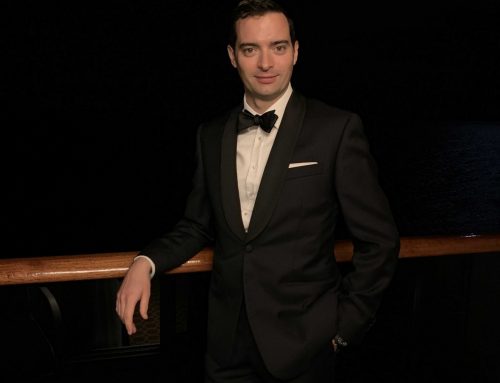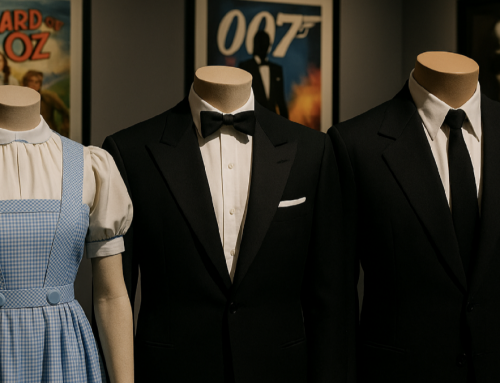
Constance Richardson
From the golden age of Hollywood to contemporary blockbusters, women in film have redefined tailoring, using it as a means of challenging gender norms, asserting authority, and crafting unforgettable on-screen personas. The evolution of female suiting in cinema tells a story of rebellion, transformation, and influence, shaping not only film history but also real-world fashion trends.
We recently spoke to one of London leading luxury stylists, Constance Richardson, whose company by Constance Rose, specialises in personal styling in London, who has very kindly given us her lineup of the best womens tailoring on-screen in the last century.

1. Marlene Dietrich in Morocco (1930) – The Original Rule Breaker
Marlene Dietrich’s tuxedo scene in Morocco remains one of the most iconic moments in cinematic history. Her androgynous look both scandalised and mesmerised audiences, paving the way for gender-fluid fashion in film. The black-tie ensemble she wore not only blurred traditional gender lines but also established a timeless aesthetic still referenced in modern styling.
2. Diane Keaton in Annie Hall (1977) – The Birth of the Relaxed Power Suit
Diane Keaton’s Annie Hall character brought oversized blazers, waistcoats, and ties into mainstream women’s fashion. Her character’s wardrobe, influenced heavily by Keaton’s personal style, set a new precedent for women embracing masculine tailoring in everyday wear. This marked a cultural shift where suiting became a symbol of individuality rather than mere conformity to traditional feminine dress codes.
3. Michelle Pfeiffer in Scarface (1983) – The 80s Power Suit Redefined
Elvira Hancock’s sleek, wide-shouldered suits in Scarface embodied the luxury and control of the 1980s power woman. Unlike the bold and flamboyant suits worn by the male characters, her sharp tailoring exuded an icy elegance, reinforcing her dominance in a male-dominated world. The film solidified the influence of 80s power dressing, a trend still echoed in today’s fashion.
4. Sigourney Weaver in Working Girl (1988) – Corporate Power Dressing at Its Peak
In Working Girl, Katharine Parker’s wardrobe represented the epitome of female ambition in the corporate world. Her structured suits, padded shoulders, and precise tailoring illustrated a shift in professional attire, moving from overtly feminine workwear to authoritative suiting. This style evolution symbolised women’s growing presence and influence in corporate spaces during the late 80s.
5. Uma Thurman in Pulp Fiction (1994) – The Effortless Cool of a Women’s Suit
Mia Wallace’s crisp white shirt and black blazer in Pulp Fiction became an instantly recognisable look, proving that simplicity can be powerful. Tarantino used minimalist tailoring to create an effortlessly captivating character. The sleek, no-fuss styling added to her enigmatic presence, showcasing the power of understated fashion.
6. Cate Blanchett in Ocean’s 8 (2018) – Rock & Roll Tailoring at Its Finest
Lou Miller’s wardrobe in Ocean’s 8 is a masterclass in relaxed, high-fashion suiting. Blending vintage influences with modern cuts and unexpected textures, Blanchett brought a rebellious elegance to the heist film genre. Her suiting choices blurred the lines between structured tailoring and effortlessly cool, redefining the modern power suit.
7. Jodie Comer in Killing Eve (2018) – The Playful Subversion of the Power Suit
Villanelle’s wardrobe in Killing Eve redefined the female assassin trope with bold, unexpected tailoring. Mixing high fashion, eccentricity, and lethal elegance, her suiting choices balanced luxury, danger, and whimsy. The character’s playful yet commanding style showcased how suiting can be authoritative and expressive.

8. Kaya Scodelario in The Gentlemen (2024) – The Modern Power Suit Reimagined
Susie Glass, played by Kaya Scodelario, brings a fresh take on the power suit in The Gentlemen series. Her tailored ensembles, often sleek and structured, reflect her sharp intelligence and control over her environment. Combining classic British tailoring with a contemporary edge, Susie’s wardrobe reinforces her commanding presence in a male-dominated world, proving that the power suit remains a timeless cinematic statement.
Conclusion: The Suit as a Cinematic Power Move
From androgynous rebellion to statements of authority and individuality, tailoring in film has continuously evolved to reflect the shifting landscape of women’s roles both on and off-screen. These iconic characters have left a lasting impact on modern women’s fashion, inspiring tailored looks that range from classic black tie suits to relaxed oversized blazers and edgy, experimental cuts. Incorporating film-inspired tailoring into a modern wardrobe allows women to channel cinematic confidence and sophistication in their everyday lives. Remember, for every James Bond, theres a Bond Girl- maye not in a tailored suit but after reading this blog I’m sure we can all agree that she should be!







